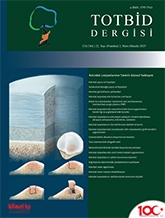
Magnetic resonance imaging (MRI) and arthroscopy stand out in the diagnosis and treatment of patients with cartilage damage. An ideal classification system should properly document a lesion, provide guidance for the best treatment options, help interpret and compare results from various treatments, and determine prognosis. Magnetic resonance imaging has a moderate sensitivity to detect cartilage lesions and can be determined by the type of injury, location, size of the lesion, MRI sequence, strength, etc. may also affect this sensitivity of MRI. In arthroscopy, which is accepted as the gold standard, there is a risk of missing a deeper occult lesions. Therefore, while MRI is an important non-invasive tool to evaluate the symptomatic patient, arthroscopy is a confirmatory method, plays a complementary role in reaching the diagnosis. Standardized systems for the evaluation of clinical outcomes of cartilage lesions, cartilage repair tissue and cartilage resurfacing methods; maintain its importance in terms of developing a common language to be used in basic and clinical sciences. Since articular cartilage is a tissue subject to constant remodeling, systems that aim to classify cartilage lesions will need to be constantly developed and renewed as well.